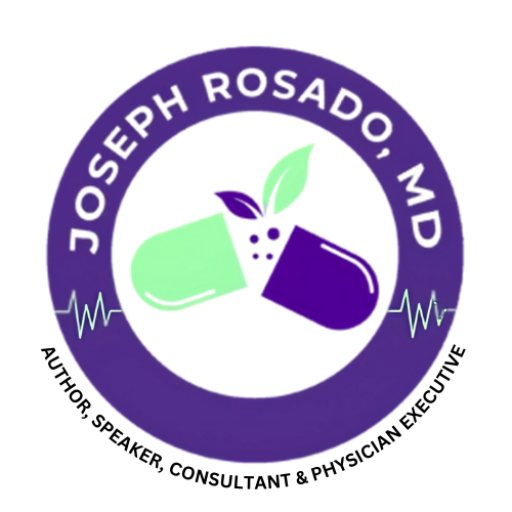Attention Deficit Hyperactivity Disorder (ADHD) is more than just a childhood condition—it’s a lifelong challenge that affects millions of people. The modern digital age, with its constant notifications, endless scrolling, and easy access to information, has created a perfect storm for ADHD symptoms to thrive.
As a medical professional, I have seen firsthand how the rise in screen time and the widespread use of telehealth have influenced ADHD diagnoses and treatment. While digital tools offer convenience, they also come with risks, particularly for young adults who spend hours each day online.

The Link Between Screen Time and ADHD Symptoms:
Higher Risk with Increased Online Activities
- A study found that young people who engaged in more than 14 online activities had a 10.5% higher increase in ADHD symptoms.
- Even those participating in half as many activities showed a 9.5% increase in symptoms.
Those who avoided online activities had a much lower symptom occurrence of 4.6%.
Common Online Activities Linked to ADHD
- Online gaming: 33.3%
- Social media interaction and browsing: 53.5%
- Messaging and video chatting: 52.1%
Streaming music, shows, and movies: 25.2%
The goal of this guide is to provide a clear, straightforward look at the many ADHD resources available—from traditional treatments and medications to alternative therapies and support groups. Whether you or a loved one is navigating ADHD, understanding these resources can make a significant difference in managing symptoms and improving quality of life.
Impact of Telehealth on ADHD Diagnosis and Medication
During the COVID-19 pandemic, telehealth services became a lifeline for healthcare, including mental health and ADHD treatment. The convenience of seeing a doctor from home increased access to ADHD diagnoses and medications. However, this surge in online medical consultations also brought challenges.
How Telehealth Changed ADHD Treatment:
Easier Access to Prescriptions
This convenience helped many access care but also raised concerns about overdiagnosis and medication misuse.
Prescription Misuse and Abuse
In 2020, 4.4% of high school seniors reported using Adderall without a prescription.
60% of young adults admitted to abusing stimulants that were not prescribed to them as early as 2017.
Increased Risk Among Young Adults
The trend isn't just limited to youth; between 2019-2021, Adderall prescriptions among adults aged 22-44 increased by 16%, reaching 41 million.
Challenges with Remote Diagnosis
Accuracy Concerns
Some critics argue that telehealth made it too easy to obtain schedule II drugs, increasing the risk of abuse and dependency
Regulatory Changes
While telehealth has undeniable benefits, it’s important to balance accessibility with safety. The rise in ADHD diagnoses through telehealth highlights the need for careful monitoring and standardized assessment protocols.
Challenges with ADHD Medication Shortages
The surge in ADHD diagnoses during the pandemic, combined with manufacturing disruptions, led to widespread medication shortages. For those relying on medications like Adderall and Ritalin, this shortage created significant challenges in managing ADHD symptoms effectively.
Why Is There an ADHD Medication Shortage?
Increased Demand
Adults aged 22-44 saw a 7.4% increase in prescriptions from 2019 to 2020, with a 15.1% spike from 2020 to 2021.
Manufacturing Issues
These companies accounted for 61.3% of Adderall sales in 2021, amplifying the impact of their production issues.
Regulatory Limits
Once the yearly production quota is reached, no more medication can be manufactured, contributing to the supply crunch.
The Domino Effect on Other Medications:
As Adderall supplies dwindled, patients turned to alternative medications like:
- Methylphenidate (Ritalin)
- Vyvanse
- This led to secondary shortages, causing further frustration for those who rely on these treatments.
How Patients Are Coping:
- Seeking Alternative Treatments: Some individuals shifted to non-stimulant medications, which are less likely to face shortages.
- Consulting Healthcare Providers: Many turned to doctors for substitute prescriptions, though this approach also increased demand for alternative ADHD drugs.
The ADHD medication shortage underscores the need for more robust production plans, flexible regulations, and diversified treatment options to ensure patients have consistent access to their needed medications.
Types of ADHD Treatments: Stimulant and Non-Stimulant Options
Treating ADHD effectively involves a combination of medication, therapy, and lifestyle changes. Medication, in particular, plays a significant role in managing symptoms like inattention, impulsivity, and hyperactivity. ADHD medications fall into two main categories: stimulants and non-stimulants.
Stimulant Medications
Stimulants are the most common treatment for ADHD, helping about 70% of adults and up to 80% of children. They work by increasing dopamine and norepinephrine levels in the brain, which improves focus and self-control.
Two Main Types of Stimulants:
Examples: Adderall, Vyvanse, Dexedrine
How They Work: Increase the availability of neurotransmitters, enhancing brain activity related to attention and behavior control.
Methylphenidate:
Examples: Ritalin, Concerta
Popularity: Methylphenidate is the most prescribed stimulant for ADHD treatment.
Forms of Stimulant Medications:
Effects last 5-8 hours.
Often requires multiple doses throughout the day.
Extended-Release (XR):
Effects last 10-12 hours.
Provides a steady release of medication, offering convenience and consistency.
Important Considerations:
DEA Regulations: Strict rules limit the production and distribution of these medications, contributing to the current shortages.
Non-Stimulant Medications: An Alternative Approach
Non-stimulants are a good option when stimulants:
- Are not effective.
- Cause undesirable side effects.
- Are unsafe due to a history of substance use disorder (SUD).
Common Non-Stimulant Medications:
- Atomoxetine (Strattera):
- The first non-stimulant approved for ADHD treatment.
- Has a strong safety profile but includes a warning for suicidal ideation.
- Alpha-2 Adrenergic Agonists:
- Clonidine and Guanfacine.
- Typically used for impulse control and emotional regulation.
Pros and Cons of Non-Stimulants:
- Pros:
- Lower risk of abuse.
- Not affected by medication shortages as much as stimulants.
- Cons:
- Can take weeks to become effective.
- May cause drowsiness or changes in blood pressure.
Choosing the Right Medication:
- The choice between stimulant and non-stimulant medications depends on:
- Individual health history.
- Response to treatment.
- Specific symptoms of ADHD.
Medication is not a one-size-fits-all solution, and finding the right treatment plan often requires trial and adjustment under the guidance of a healthcare professional.
Therapy and Counseling for ADHD Management
While medication is a critical component of ADHD treatment, therapy and counseling play an equally important role in managing symptoms and improving quality of life. Combining medication with therapy, particularly Cognitive-Behavioral Therapy (CBT), can lead to significant improvements in focus, behavior, and emotional regulation.
The Role of Cognitive-Behavioral Therapy (CBT) in ADHD Treatment
- Develop practical coping strategies.
- Change negative thought patterns.
- Improve organizational skills.
- Enhance time management.
- In a study, 31% of adults with ADHD saw a 20% reduction in symptoms through CBT.
- When combined with medication, 69% of participants moved from feeling “much improved” to “very improved.”
- Individual Therapy: Offers personalized attention to address specific challenges.
- Group Therapy: Provides supportive environments, where individuals can share experiences and learn from others.
Other Therapeutic Approaches for ADHD
Behavioral Therapy:
- Helps create positive behavior patterns through reinforcement techniques.
Coaching for ADHD:
- ADHD-specific coaches work on setting goals, improving organization, and managing daily tasks.Many individuals find this helpful in conjunction with CBT.
- You can find an ADHD-specific coach through resources like CHADD (Children and Adults with ADHD) and ADDA (Attention Deficit Disorder Association).
Family Therapy:
- Teaches family members how to support loved ones with ADHD.
- Can reduce stress and miscommunication within the household.
Why Therapy Matters Alongside Medication
Medication manages chemical imbalances, while therapy:
- Addresses behavioral patterns.
- Builds long-term coping strategies.
- Reduces emotional distress related to ADHD challenges.
Therapy isn’t just for those struggling with severe symptoms—it’s beneficial for anyone looking to enhance their focus, productivity, and emotional health. Combining medication with therapy creates a well-rounded approach to managing ADHD effectively.
Diagnosis Trends in ADHD: Shifting Demographics and Emerging Insights
Over the past few years, the landscape of ADHD diagnosis has shifted significantly. Traditionally considered a childhood disorder, ADHD is now increasingly recognized in adults and women, uncovering a broader and more complex picture of this condition.
Rising Diagnosis Rates Among Adults:
- Between 2016 and 2021, the number of people taking stimulant medications for ADHD rose from 3.6% to 4.1%.
- Adults, particularly those aged 25-44, saw a 10% increase in prescription stimulant fills during the peak pandemic years (2020-2021).
Why the Increase in Adult Diagnoses?
- The pandemic’s impact on daily routines highlighted attention and focus issues in adults.
- Many adults recognized long-standing symptoms they previously attributed to stress or busy lifestyles.
- Increased use of telehealth services made ADHD evaluations more accessible, contributing to the rise in diagnoses.


Shifting Attention to Women with ADHD:
For many years, ADHD was seen primarily as a male disorder, with boys more likely to be diagnosed than girls. However, new data reveals that women are increasingly being diagnosed with ADHD, often later in life.
- From 2020 to 2022, the number of women aged 23-49 diagnosed with ADHD nearly doubled.
- Females often present with inattentive symptoms, such as daydreaming, disorganization, and emotional dysregulation, which are less disruptive and therefore easier to overlook.
Why Was ADHD in Women Overlooked for So Long?
- Symptoms in females often mimic other conditions like anxiety or depression, leading to misdiagnosis.
- Societal expectations for women to be organized and multitasking experts can mask ADHD symptoms.
- Many women learn to “mask” their symptoms, adapting behavior to fit societal norms, which delays recognition and treatment.
Addressing Diagnostic Gaps:
- There is currently no official guideline for adult ADHD diagnosis in the U.S., only for children.
- The American Professional Society of ADHD and Related Disorders (APSARD) is working on creating the first adult-specific diagnostic criteria.
- Establishing these guidelines will help healthcare providers offer more accurate diagnoses and appropriate treatments for adults with ADHD.
The Importance of Early and Accurate Diagnosis:
- Proper diagnosis can lead to effective treatment plans that improve daily functioning, self-esteem, and quality of life.
- It also helps reduce misuse of ADHD medications by ensuring only those who truly need them receive prescriptions.
With growing awareness and evolving guidelines, more people are finally getting the support they need. Whether you are an adult questioning long-standing focus issues or a woman who has struggled to fit the “traditional ADHD profile,” this is an important time to explore diagnostic resources and treatment options.
Current ADHD Medication Shortage and Policy Updates
The ongoing ADHD medication shortage has impacted countless patients who rely on medications like Adderall, Ritalin, and Vyvanse to manage their symptoms. The shortage, driven by increased demand, manufacturing delays, and regulatory constraints, has led to challenges in accessing these critical medications.

- Regulatory Limits:
- The DEA (Drug Enforcement Administration) sets annual production quotas for schedule II medications, including ADHD stimulants.
- Once these quotas are met, manufacturers cannot produce more until the following year.
- Increased Demand:
- During the pandemic, telehealth services made it easier to obtain prescriptions, leading to a surge in diagnoses and medication use.
- Between 2019 and 2021, Adderall prescriptions alone increased by 16%, straining the supply chain.
- Manufacturing Challenges:
- Major producers like Teva, Lannett, and Mallinckrodt faced labor shortages and ingredient supply issues, disrupting production.
- These companies account for over 60% of the U.S. Adderall market, amplifying the impact of any disruptions.
- Switching Medications:
- Many patients had to shift to alternative treatments like methylphenidate (Ritalin) or non-stimulant medications.
- This led to a domino effect, causing secondary shortages of these substitute medications.
- Treatment Disruptions:
- Individuals who rely on consistent medication to manage symptoms faced gaps in treatment, which affected their daily functioning and well-being.
- The Food and Drug Administration (FDA) has acknowledged that some ADHD medications may not be fully available until 2024.
- The DEA proposed new rules to create permanent telemedicine guidelines, focusing on the controlled prescription process:
- Telemedicine Flexibility:
- The proposal allows for continued use of telemedicine for non-controlled medications and for controlled substances if initiated by an in-person visit.
- It restricts the use of telemedicine solely for obtaining schedule II drug prescriptions, aiming to reduce misuse.
- Telemedicine Flexibility:
- Temporary Extensions:
- On May 9, 2023, the DEA and SAMHSA (Substance Abuse and Mental Health Services Administration) extended the telemedicine flexibilities for six months, until November 11, 2023.
- This extension provides temporary relief, allowing patients to maintain access to ADHD medications while new rules are finalized.
What Patients Can Do:
- Stay Informed: Keep up with policy changes and supply updates from the FDA and DEA.
- Consult Healthcare Providers: Discuss alternative treatment options if medications are unavailable.
- Explore non-stimulant medications and therapeutic strategies as part of a well-rounded treatment plan.
- Plan Ahead: Refill prescriptions early and communicate with pharmacies about availability.
The evolving situation highlights the need for balanced policies that maintain accessibility while preventing misuse of ADHD medications. The DEA’s new regulations and the push for adult ADHD guidelines by the American Professional Society of ADHD and Related Disorders (APSARD) are positive steps towards long-term stability.
Essential ADHD Resources: Tools and Support for Managing ADHD
When it comes to managing ADHD, having access to the right resources and tools can make a significant difference. Whether you’re looking for educational materials, therapists, support groups, or practical tools, there are many reliable resources available to help navigate ADHD effectively.


CHADD (Children and Adults with ADHD):
- One of the leading organizations providing education, advocacy, and support for individuals with ADHD.
- Offers a knowledge base, support groups, and resources for both children and adults.
- Contact: 1-866-200-8098, M-F, 1-5 pm ET.
ADDitude Magazine:
- A trusted source for ADHD information for over 25 years.
- Features expert articles, podcasts, webinars, and community forums.
- Provides practical advice on living with ADHD, from school strategies to workplace tips.
ADDA (Attention Deficit Disorder Association):
- The world’s largest adult ADHD organization, dedicated to improving the lives of adults with ADHD.
- Offers virtual support groups, educational resources, and networking opportunities.
PsychCentral:
- Offers a variety of self-assessment tools, articles, and resources on ADHD and mental health.
- Helps individuals understand their symptoms and find appropriate treatment options.
StayFocusd (Chrome Extension):
- Helps manage screen time by blocking distracting websites.
- Allows users to set time limits on specific sites, encouraging productivity and focus.
ADHD Self-Assessment Quizzes:
- Do I Have ADHD? – A short, free quiz from Psych Central to help identify potential ADHD symptoms.
- Adult ADHD Assessment: A tool to evaluate if you might be experiencing adult ADHD symptoms.
- ADHD Symptom Self-Tests: ADDitude Magazine offers a variety of self-assessment tools to help understand focus and behavior patterns.
- “Taking Charge of Adult ADHD” by Russell Barkley:
- Offers step-by-step strategies to manage adult ADHD symptoms.
- “ADD-Friendly Ways to Organize Your Life” by Judith Kolberg and Kathleen Nadeau:
- Provides practical organization techniques tailored to ADHD minds.
- “A Radical Guide for Women with ADHD” by Sari Solden and Michelle Frank:
- Specifically designed for women, this book explores strategies for empowerment and self-care.
- “When ADHD and Anxiety Occur Together” by Thomas E. Brown:
- Explores the connection between ADHD and anxiety, offering coping techniques.
- Access to Expert Advice: Many of these platforms connect you with professionals and specialists who understand ADHD.
- Community Support: Participating in support groups or forums can help reduce isolation and build a network of understanding peers.
- Self-Management Tools: Apps and quizzes provide practical methods for improving focus, productivity, and emotional well-being.
These resources offer a solid foundation for anyone navigating ADHD, whether through professional guidance, self-help materials, or peer support networks.
Recommended Reading and Educational Materials for ADHD
When it comes to managing ADHD, knowledge is power. There are numerous books, articles, and ebooks that offer valuable insights, practical strategies, and real-life stories from those who have navigated life with ADHD. These resources are particularly helpful for adults, parents, and women dealing with ADHD.
- “Taking Charge of Adult ADHD” by Russell Barkley:
- A comprehensive guide that offers step-by-step strategies to manage ADHD in daily life, from work to relationships.
- “ADD-Friendly Ways to Organize Your Life” by Judith Kolberg and Kathleen Nadeau:
- Provides practical advice on how to create manageable routines, stay organized, and reduce stress.
- “A Radical Guide for Women with ADHD” by Sari Solden and Michelle Frank:
- Addresses the unique challenges faced by women with ADHD.
- Explores self-acceptance, identity, and personal growth.
- “When ADHD and Anxiety Occur Together” by Thomas E. Brown:
- Explains the connection between ADHD and anxiety, offering coping techniques and treatment options.
- “The ADHD Guide to Naturally Flowing, ‘Normal’ Conversations”:
- A practical resource for improving communication skills and managing social interactions.
ADDitude Magazine’s E-books:
- Topics include managing adult ADHD, navigating ADHD in the workplace, and helping children with ADHD.
“12 No-Fail Focus Tricks for ADHD Brain”:
- An article that shares mind-strengthening strategies to improve focus and productivity.
“ADHD, Productivity, and Working from Home”:
- Provides tips to avoid distractions and maintain productivity while working remotely.
“For Adults with ADHD”:
- A series of e-books by ADDitude Magazine, offering practical advice for daily management of ADHD symptoms.
Builds Understanding: Helps you recognize ADHD symptoms and how they affect daily life.
- Teaches Strategies: Many books and articles offer specific tools to handle time management, organization, and focus issues.
- Reduces Stigma: Learning more about ADHD can help reduce shame and misunderstandings, both personally and within families.
- Supports Personal Growth: Particularly for women and adults, these resources can help with self-acceptance and confidence building.
Podcasts and Video Resources for ADHD Support
For many people with ADHD, traditional reading materials might not always be the easiest way to learn. Podcasts and videos offer a more engaging, accessible, and often relatable format to gain insights and strategies for managing ADHD. Whether you’re commuting, exercising, or just need a break, these resources provide valuable information in a digestible format.
Top Podcasts for ADHD Support
- How to ADHD (YouTube Channel)
- Hosted by: Jessica McCabe
- About: Covers a wide range of ADHD-related topics including motivation, organization, and emotional management.
- Why It’s Helpful: Jessica’s personal experience with ADHD makes her insights practical and relatable.
- ADHD 365 & All Things ADHD (Podcasts by CHADD)
- Focus: Offers discussions on ADHD management, treatment options, and real-life stories from experts and those living with ADHD.
- Special Feature: Includes expert interviews and evidence-based strategies for managing symptoms.
- Hacking Your ADHD (Podcast)
- Hosted by: Will Curb
- About: Shares practical strategies and life hacks to improve focus, productivity, and daily routines.
- Great For: Anyone looking for short, actionable advice tailored to ADHD minds.
- Taking Control: The ADHD Podcast
- Hosts: ADHD coach Pete Wright and co-host Nikki Kinzer
- Content: With over 400 episodes, this podcast offers insights on everything from time management to emotional health.
- Audience: Ideal for those wanting deep dives into specific ADHD challenges.
- ADHD Experts Podcast (by ADDitude Magazine)
- Focus: Features leading ADHD specialists, covering topics like medication management, therapeutic approaches, and lifestyle tips.
- Accessibility: Offers episodes on parenting children with ADHD as well as adult ADHD management.
Videos and Channels That Help You Learn About ADHD
How to ADHD (YouTube):
- Known for its friendly and approachable style, this channel offers videos on how to manage ADHD in real-life scenarios.
- Popular episodes include guides on working from home, boosting motivation, and improving social skills.
- ADDitude ADHD Webinars:
- Offers recorded webinars on topics like diagnosis trends, treatment options, and support strategies.
- These videos provide expert insights and are ideal for those who prefer visual learning.
- Jessica McCabe’s ADHD Guides:
- Detailed videos on specific challenges such as procrastination, organization, and emotional regulation.
- She combines research-based insights with personal stories, making her advice authentic and effective.
Why Choose Podcasts and Videos for ADHD Learning?
- Engaging Format: Ideal for those who find reading challenging or prefer auditory learning.
- Accessibility: You can listen or watch while doing other activities, making it easier to absorb information.
- Expert Insights: Many of these resources feature specialists, psychologists, and experienced ADHD coaches.
- Community Feel: Podcasts often share real stories from people living with ADHD, helping listeners feel less isolated.
Podcasts and videos provide ongoing support, practical advice, and inspiration for anyone on an ADHD journey. They are an excellent way to stay informed, motivated, and connected with the ADHD community.
Making the Most of ADHD Resources
Living with ADHD presents unique challenges, but with the right resources and support, it is entirely possible to thrive. This guide has explored essential tools, therapeutic options, and educational resources that can help manage ADHD effectively. Combining medication, therapy, and self-help strategies creates a well-rounded approach to improving focus, productivity, and overall well-being.
Medication management is a cornerstone of ADHD treatment, whether through stimulant or non-stimulant medications. Working closely with a healthcare provider ensures that treatment is safe and effective, especially during the current ADHD medication shortage. It is also important to stay flexible and consider alternative treatments if access to medications becomes difficult. Options such as Cognitive-Behavioral Therapy (CBT) and ADHD-specific coaching provide valuable strategies to improve focus, manage symptoms, and develop healthy coping mechanisms. These therapies work well individually or in combination with medication, offering a balanced approach to ADHD management.
Building a strong support network is another key component of navigating ADHD. Support groups, podcasts, and educational videos not only offer practical insights but also reduce the feeling of isolation that many people with ADHD experience. Organizations like CHADD (Children and Adults with ADHD) and ADDA (Attention Deficit Disorder Association) provide trusted information, community support, and advocacy that can make a significant difference. These resources are particularly helpful for adults, parents, women, and young adults, offering tailored advice and support for specific challenges.
Looking ahead, staying informed about policy changes and treatment options is crucial. The evolving situation with ADHD medication availability and new regulations surrounding telehealth services highlights the need for ongoing awareness and adaptation. Following updates from reputable sources such as the FDA, DEA, and ADHD advocacy organizations can help you navigate these changes effectively. Exploring alternative treatments, discussing options with healthcare providers, and building a reliable support system are proactive steps that can enhance treatment outcomes.

FAQs:
The best treatments include stimulant medications (e.g., Adderall, Ritalin), non-stimulant options (e.g., Strattera), and behavioral therapies like cognitive-behavioral therapy (CBT).
Therapy, especially CBT, helps by teaching coping strategies, improving focus, and managing negative thought patterns.
Stimulants (e.g., Adderall, Ritalin) increase dopamine and norepinephrine levels quickly. Non-stimulants (e.g., Strattera) work more gradually and are less likely to be addictive.
The shortage makes it harder to access medications, leading some to explore alternatives like non-stimulant drugs or therapy-based treatments.
Yes, options include behavioral therapy, exercise, mindfulness, dietary changes, and supplements like omega-3s.
Adults can be diagnosed by a qualified healthcare provider through a detailed assessment, including symptom checklists and medical history.
Resources like ADDitude Magazine, Therapy for Black Girls, and support groups provide tailored information and community support.
Yes, through therapy, lifestyle changes, structured routines, and tools for organization and focus.
Use directories from organizations like CHADD and ADDA to find professionals with ADHD expertise.





